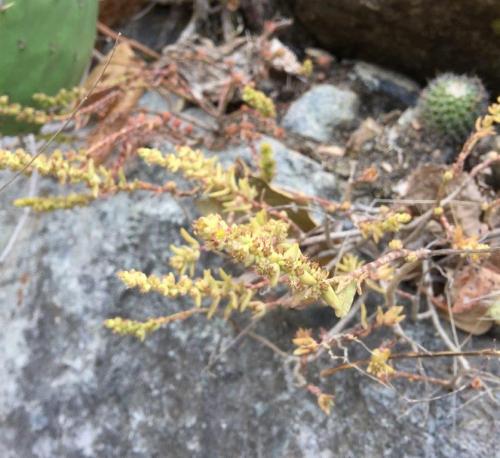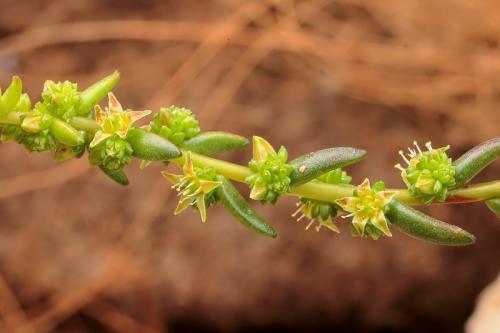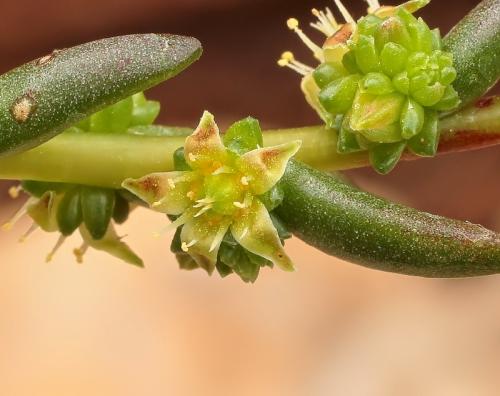GUATEMALENSIS Rose, 1909
Synonyms :
Altamiranoa guatemalensis (Rose) E.Walther (1938)
Villadia levis Rose (1909)
Altamiranoa levis (Rose) E.Walther (1938)
Distribution : Mexico (Oaxaca); Guatemala (Baja Verapaz, Sololà).
Description (by J. Thiede in IHSP, 2003) :
Shrublets.
Stems ± strictly erect to divaricately fastigiate or ascending to decumbent.
Flowering stems erect or ascending, finely papillose, 30 – 50 cm, deciduous ± in the upper ½, richly branched in the lower ½, base becoming woody and persistent.
Sterile stems short, with leaves densely arranged and rosette-like.
Leaves linear, ± perpendicularly spreading but ± curved upwards, almost blunt or ± acute, apically and along the dorsal keel delicately papillose, 5,6 – 23 x 2,4 – 3,2 mm, pale yellowish-green, sometimes spotted with rose or red.
Inflorescences lax thyrses, elongate, to 28 cm, with 5 – 70 scorpioid branches.
Flowers rarely only 4-merous, sepals almost free, oblong-ovate, apically finely papillose, unequal, 3 – 3,4 x 1,2 – 1,6 mm, green, corolla basally pentagonal, 8 – 9 mm in diameter, petals dorsally finely papillose and keeled, 4,2 – 6 x 1,2 – 2 mm, greenish-yellow to white, often strongly red-spotted, tube 1 – 1,4 mm, lobes broadly spreading ro recurved, lanceolate, obtuse, spotted with reddish in the upper ½ with white marginal fringe, stamens 1,4 – 4,8 mm, filaments basally united with the corolla tube for 0,6 – 1,5 mm, pale green, sometimes apically flushed with rose.
Cytology : n = 20, 21
Very variable in its growth form. Frequently cultivated.
In habitat in Oaxaca :

Photo Gerhard Köhres
In cultivation :


Photos Stefan Neuwirth